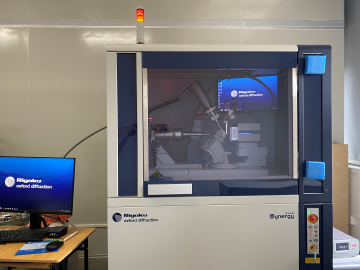Research in the Ren Group
Project I: Pincer metal complexes acting as highly-active catalysts for small molecule activation
The organometallic catalysts are broadly utilized in organic transformations. Ren’s group has been dedicating to design novel transition-metal-based complexes which act as highly-active catalysts with the aid from the electronic and steric tunability of special ligands. Pincer-type ligands can provide extrordinary stability of the complexes and show a broad spectrum of catalytic activity. Meanwhile, Ren’s group is also interested to explore the low coordinated transition metal complexes with pincer ligands. These coordinatively unsaturated complexes can be utilized to activate small molecules such as H 2, NH3, CO2, CO, BH3, ROH et al. Moreover, to develop a new methodology also fall in our research scope that could utilize these small molecules for catalytic organic transformations. Our latest publication in this area has been released (Advances in Organometallic Chemistry, 2021, volume 75.https://doi.org/10.1016/bs.adomc.2021.04.003).

Project II: Synthesis of multifunctional MOFs for catalysis, sensor and water purification
Metal-organic frameworks (MOFs), also known as porous coordination polymers (PCPs), are an emerging class of porous materials. MOFs are crystalline porous compounds in which central metal atoms are bridged via multitopic organic ligands to construct 2D or 3D coordination networks. The field of MOFs has become one of the fastes growing fields in not only chemistry but also material science, due to their structural and functional tunability. With the maturation of the synthesis methodology, structure characterization, and functionality modification, a new stage of MOFs as a usefully applied material has arrived, with a huge number research appearing in the last few years, dealing with their applications in a variety of fields.

Catalysis is among the most promising and fascinating techniques widely used in various research fields and industries. Heterogeneous catalysts have received more attention than homogeneous catalysts owing to reusability and selectivity. MOFs are excellent tools for converting homogeneous catalysts into heterogeneous catalysts. Regarding water pollution, organic dyes and heavy metals (oxoanions) are the major pollutants owing to their long lifetimes. For ionic 3D MOFs, free anions/cations are located inside the pores and can be replaced by ionic pollutants with the same charge through ion exchange. The removal efficiency depends on both the sizes of the MOFs’ pores and dye molecules. Moreover, due to ligand and metal coordination effects, the designed MOFs have also been used as electrode material due to the lithium storage property and luminescent material. Our latest publications in this area are listed herein ( Inorganic chemistry, 2021,60, 7070. https://pubs.acs.org/doi/10.1021/acs.inorgchem.0c03688; Catalysis Communications, 2020, 142, 106032.https://doi.org/10.1016/j.catcom.2020.106032)
Project III: Chemical sensors for the detection of ions, hazardous chemicals and biomolecules
One of the present challenges of sensor research is to design new rapid and cost-effective devices for the detecting hazardous chemicals,biomarkers and biomolecules for the public health affairs. However, the chemical sensors studies have met the major challenges to develop artificial devices as a solution to many public health issues. The signal transduction studies of sensors are helpful to explain the mode of transitions such as photo-induced electron transfer (PET), Fourier resonance energy transfer (FRET), charge transfer (CT), energy transfer(EnT), intersystem crossing (ISC), et al.

Ren’s group has designed and studied different sensors for metal ions,anions, hazardous chemicals and cancer biomarkers. To further understand the signal transduction relationships between sensors and analytes, the charge energy transfer and the modeling calculations are the main issues. For the sensors, temperature, solubility, time, pH, etc. are factors responsible for desired structures. As for the detection of the analytes, solubility, size and charge, and different functional groups can influence the sensing process. The structural properties, sensing mechanisms, roles of noncovalent interactions, limits of detection, modeling, advantages have been reported. Our fresh publication in this area has been released (Advanced Sustainable Systems, 2021, 5, 2000293.https://doi.org/10.1002/adsu.202000293, Journal of Photochemistry & Photobiology, A: Chemistry 2021, 408,113097.https://doi.org/10.1016/j.jphotochem.2020.113097)
Instruments
 GC (Thermo Trace 1300)
GC (Thermo Trace 1300)
 Rotavap (Buchi 300)
Rotavap (Buchi 300)
 Glovebox (twin working stations equipped with solvent purification system and Julabo low temperature system)
Glovebox (twin working stations equipped with solvent purification system and Julabo low temperature system)
 XRD (Xtalab Synergy)
XRD (Xtalab Synergy)
 BET analyzer (ASAP 2040)
BET analyzer (ASAP 2040)
 GPC (Agilent 1260 Infinity II)
GPC (Agilent 1260 Infinity II)